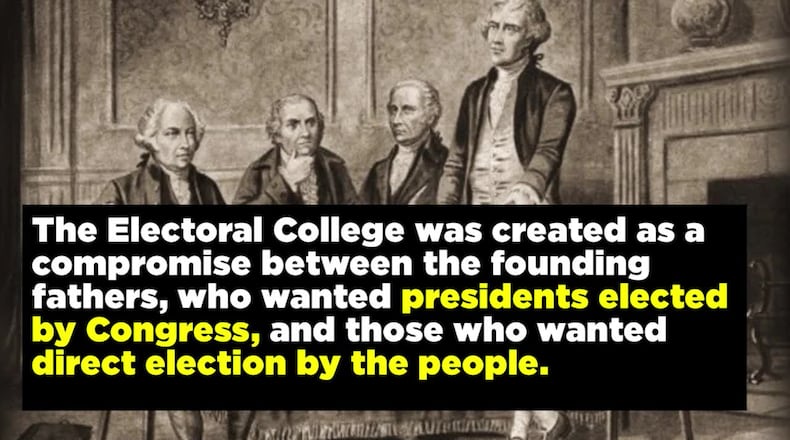The “College” is made up of people from each state, in number equal to their representation in Congress, charged with electing the president. So we actually vote for a slate of electors to represent our state, who then elect the president.
Silly, right? And these slates of electors are chosen in the most silly way imaginable: major donors, local party chairpersons, up-and-coming new party favorites, local office holders, state officials …
And if that’s not silly enough, many such state delegations (17) don’t even promise to vote for their party’s presidential and vice-presidential candidates (separately per Amendment 12). They can vote for whomever they please or, more likely and dangerously, abstain
. True, the other 33 and DC require pledges, but there is little or no penalty for “faithless electors” except possible replacement or vote cancellation. Reportedly no one has ever been prosecuted.
Ohio requires pledges, but there is no penalty and the faithless vote would stand.
The Electoral College doesn’t always reflect the will of the majority of the voters nationally. Presidential candidates have won the popular vote but lost in the Electoral College five times, most recently with Hillary Clinton receiving 2,700,000 more votes than Donald Trump in 2016.
So it’s getting more disingenuous to claim “the will of the people” rather than the will of the Electoral College.
I can understand why this anachronism came about, and even why it might have had some fairness in its early years when states were more internalized relative to the national interest. But times have changed; travel and communication blurs state boundaries and loyalties. New residents and immigrants don’t think of themselves as Ohioans or Texans or New Yorkers; they’re Americans. And an American majority should count for something.
We can’t blame this silliness on the founding fathers; they performed a monumental task, logical at the time, when no country in the world directly elected its chief executive.
They didn’t anticipate political parties, and assumed that no single candidate would receive a majority of the popular vote, and needed a compromise that wouldn’t toss every election into the House of Representatives. (If no candidate has a majority, the House decides with one vote per state.)
But with the probable chaos of drawn-out vote counts, recounts, challenges, lawsuits, fraud accusations and investigations, and other contestations, the Electoral College itself will probably not be the problem this year. Archaic as it is, that august body will probably stay cool and carry on as usual on December 14th.
But we never know; strange things have been happening this entire campaign season and there WERE seven validated faithless electors in 2016. Stay tuned.
Beavercreek resident David Shumway is a retired engineer. He penned the Beavercreek history book “Birth of a City.” Community contributors are people who frequently submit fact-based guest columns.
About the Author

